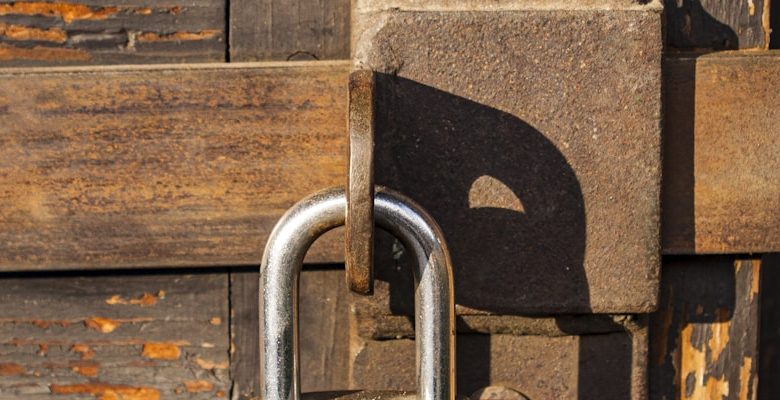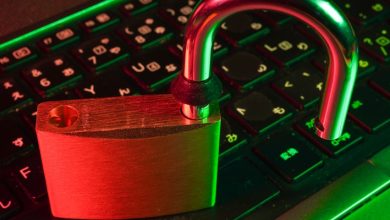The Role of Two-Factor Authentication in Protecting Your Assets

- Understanding the Basics of Two-Factor Authentication
- Why Two-Factor Authentication is Essential for Protecting Your Assets
- The Different Types of Two-Factor Authentication Methods Available
- Tips for Implementing Two-Factor Authentication Successfully
- Challenges and Common Misconceptions about Two-Factor Authentication
- The Future of Two-Factor Authentication and Emerging Technologies
Understanding the Basics of Two-Factor Authentication
Two-factor authentication (2FA) is a security process that requires two different authentication methods to verify the user’s identity. It adds an extra layer of security to your online accounts, making it harder for unauthorized users to gain access.
One of the most common forms of 2FA is something you know (like a password) combined with something you have (like a smartphone or security token). This means that even if someone manages to steal your password, they would still need the second factor to access your account.
By using 2FA, you are significantly reducing the risk of unauthorized access to your sensitive information. It provides an additional barrier that can prevent hackers from gaining control of your accounts and potentially stealing your assets.
Why Two-Factor Authentication is Essential for Protecting Your Assets
Two-Factor Authentication is a crucial security measure for safeguarding your valuable assets online. By requiring two forms of verification before granting access, this extra layer of protection significantly reduces the risk of unauthorized access to your accounts.
One of the main reasons why Two-Factor Authentication is so essential is its ability to prevent unauthorized access even if your password is compromised. Hackers may be able to obtain your password through various means, but without the second form of verification, they will be unable to breach your account.
Furthermore, Two-Factor Authentication adds an extra level of security by ensuring that the person trying to access your account is indeed you. This helps to prevent identity theft and unauthorized transactions that could result in financial loss.
With the increasing prevalence of cyber threats and hacking attempts, it is more important than ever to prioritize the security of your online accounts and assets. Implementing Two-Factor Authentication is a simple yet effective way to enhance your security posture and protect your valuable information from falling into the wrong hands.
The Different Types of Two-Factor Authentication Methods Available
Two-factor authentication (2FA) is a crucial security measure to protect your assets online. There are various types of two-factor authentication methods available to enhance the security of your accounts.
One common type of 2FA is SMS-based authentication, where a code is sent to your mobile phone that you need to enter along with your password. Another popular method is app-based authentication, where a code is generated by an authenticator app on your smartphone. This code changes every few seconds, adding an extra layer of security.
Biometric authentication is also becoming increasingly popular as a 2FA method. This can include fingerprint scans, facial recognition, or even iris scans. Biometric data is unique to each individual, making it a highly secure form of authentication.
Hardware tokens are another form of 2FA that provide an extra layer of security. These physical devices generate codes that you need to enter along with your password. This method is particularly effective for high-security environments.
In addition to these methods, there are also security keys that can be used for 2FA. These keys are typically USB devices that you insert into your computer to authenticate your identity. They provide a high level of security and are resistant to phishing attacks.
Overall, using a combination of these different types of two-factor authentication methods can greatly enhance the security of your online accounts and protect your valuable assets from unauthorized access.
Tips for Implementing Two-Factor Authentication Successfully
Implementing two-factor authentication can greatly enhance the security of your assets and protect them from unauthorized access. Follow these tips to successfully implement two-factor authentication:
– Utilize a reliable authentication app or hardware token that generates one-time codes for an added layer of security.
– Ensure that all users, including employees and customers, are educated on how to use two-factor authentication properly.
– Customize the two-factor authentication settings to fit your specific security needs and requirements.
– Regularly update and review your two-factor authentication protocols to stay ahead of potential security threats.
– Consider implementing biometric authentication methods, such as fingerprint or facial recognition, for added security.
– Monitor and analyze login attempts and user activity to detect any suspicious behavior and take appropriate action.
– Provide a seamless user experience by offering multiple options for two-factor authentication, such as SMS codes, email verification, or security questions.
– Collaborate with your IT team or a trusted cybersecurity provider to ensure that your two-factor authentication implementation is robust and effective.
By following these tips, you can successfully implement two-factor authentication and enhance the security of your assets against potential threats.
Challenges and Common Misconceptions about Two-Factor Authentication
Two-factor authentication (2FA) is a powerful tool in enhancing the security of your online accounts and protecting your assets from unauthorized access. However, there are a few challenges and common misconceptions associated with the implementation of 2FA that users should be aware of.
One common misconception about 2FA is that it is foolproof and guarantees complete protection against cyber threats. While 2FA does add an extra layer of security by requiring users to provide two forms of identification, such as a password and a unique code sent to their phone, it is not immune to hacking attempts. Cybercriminals have developed sophisticated techniques to bypass 2FA, such as SIM swapping or phishing attacks, which can compromise the security of your accounts.
Another challenge with 2FA is the inconvenience it may pose to users. Some people find the additional step of entering a verification code or using a security key to be cumbersome and time-consuming. This can lead to users disabling 2FA altogether or choosing weaker authentication methods, leaving their accounts vulnerable to attacks.
Despite these challenges and misconceptions, it is essential to understand that 2FA remains one of the most effective ways to protect your assets online. By combining something you know (like a password) with something you have (like a phone or security key), 2FA significantly reduces the risk of unauthorized access to your accounts.
In conclusion, while there are challenges and misconceptions surrounding 2FA, it is crucial for users to prioritize security and take advantage of this extra layer of protection. By staying informed about the best practices for implementing 2FA and being aware of potential threats, you can safeguard your assets and enjoy a more secure online experience.
The Future of Two-Factor Authentication and Emerging Technologies
As technology continues to advance, the future of two-factor authentication (2FA) is evolving to adapt to emerging technologies. One of the key advancements in 2FA is the use of biometric authentication, such as fingerprint or facial recognition. These methods provide an additional layer of security by verifying a person’s unique biological characteristics. Biometric authentication is becoming more prevalent in smartphones and other devices, making it easier for users to securely access their accounts.
Another emerging technology in 2FA is the use of hardware tokens. These physical devices generate one-time codes that users must enter along with their passwords to access their accounts. Hardware tokens are more secure than traditional SMS codes because they are not susceptible to phishing attacks. As more companies adopt hardware tokens for 2FA, we can expect to see a decrease in successful account breaches.
Blockchain technology is also being explored as a tool for enhancing 2FA security. By decentralizing authentication processes, blockchain can help prevent unauthorized access to sensitive information. Blockchain-based 2FA systems are still in the early stages of development, but they show promise for improving security in the future.



